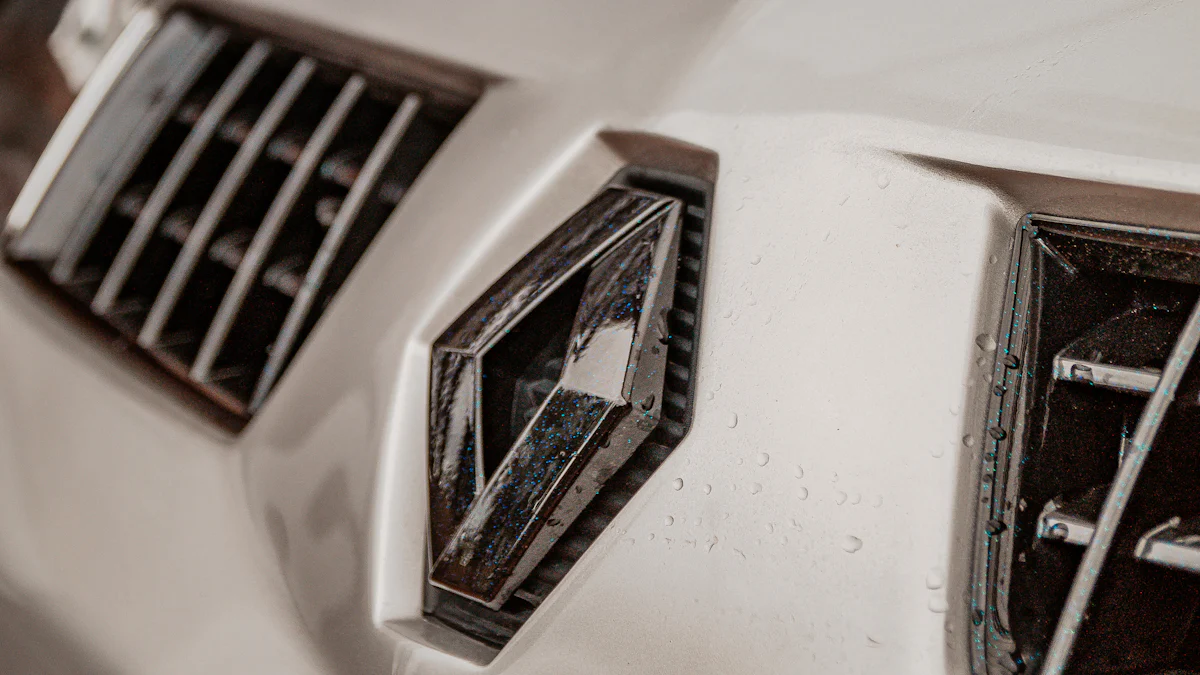
Deburring plays a crucial role in manufacturing and craftsmanship. A deburring tool removes burrs and imperfections from materials, ensuring consistent and high-quality results. Mastering the use of a deburring tool offers several benefits:
- Improved safety: Smooth edges prevent injuries during handling.
- Enhanced product quality: Deburring increases wear resistance and material life.
- Cost efficiency: Automated deburring saves staff costs and increases process reliability.
The Ace Hardware Deburring Tool exemplifies these advantages, making labor-intensive jobs quicker and easier.
Understanding Deburring Tools

Definition and Purpose
What is a deburring tool?
A deburring tool is a piece of equipment designed to smooth off burrs or rough edges on various materials. This tool ensures that products perform as intended and reduces the risk of injury during handling. Deburring tools can be manual, automated, or specialized, each serving specific deburring needs.
Why is deburring necessary?
Deburring is essential for several reasons:
- Safety: Smooth edges prevent injuries.
- Product Quality: Deburring enhances wear resistance and extends material life.
- Efficiency: Automated deburring saves time and labor costs.
Types of Deburring Tools
Manual deburring tools
Manual deburring tools require human effort to remove burrs. These tools are versatile and suitable for small-scale operations. Common examples include hand files, scrapers, and rotary tools. Manual tools offer precision but may lead to inconsistency if not used correctly.
Automated deburring tools
Automated deburring tools use machinery to remove burrs. These tools provide consistent results and are ideal for large-scale operations. Examples include deburring machines with brushes, chamfering tools, and abrasives. Automated tools reduce labor costs and increase process reliability.
Specialized deburring tools
Specialized deburring tools cater to specific applications. These tools include gear deburring machines and angle grinders. Gear deburring machines use brushes and chamfering tools to deburr gear teeth and edges. Angle grinders, known for versatility, make labor-intensive jobs quicker and easier.
Materials and Applications
Common materials requiring deburring
Deburring tools work on various materials, including:
- Metal: Aluminum, steel, and copper.
- Plastic: PVC pipes and other plastic components.
- Wood: Wooden edges and surfaces.
Industries that use deburring tools
Several industries rely on deburring tools for quality and safety:
- Manufacturing: Ensures smooth edges on metal and plastic parts.
- Construction: Prepares materials for safe handling and installation.
- Automotive: Enhances the durability and performance of vehicle components.
Deburring tools play a vital role in maintaining high standards across these industries. Proper use ensures safety, quality, and efficiency in various applications.
How to Use a Deburring Tool

Preparation
Safety precautions
Safety remains paramount when using a deburring tool. Always wear protective gear, including safety glasses and gloves. Ensure that the workspace is well-lit and free from obstructions. Maintain a first-aid kit nearby in case of accidents. Follow the manufacturer’s guidelines for tool operation.
Selecting the right tool
Choosing the appropriate deburring tool depends on the material and the specific application. Manual tools work well for small-scale tasks and intricate details. Automated tools suit large-scale operations requiring consistency. Specialized tools address unique needs, such as gear deburring or angle grinding. Match the tool to the job for optimal results.
Step-by-Step Guide
Setting up the workspace
Organize the workspace before beginning the deburring process. Secure the material to prevent movement during operation. Arrange tools within easy reach to avoid unnecessary interruptions. Keep the area clean to ensure precision and safety.
Proper handling techniques
Hold the deburring tool firmly but without excessive force. Position the tool against the edge to be deburred, maintaining gentle contact. Move the tool smoothly along the edge to remove burrs. Avoid pressing too hard to prevent over-deburring and potential damage to the material.
Techniques for different materials
Different materials require specific deburring techniques:
- Metal: Use a rotary tool or file for precise deburring. Apply light pressure to avoid damaging the metal surface.
- Plastic: Employ a scraper or specialized plastic deburring tool. Work slowly to prevent melting or deforming the plastic.
- Wood: Utilize a hand file or sandpaper for wooden edges. Follow the grain of the wood to achieve a smooth finish.
Common Mistakes to Avoid
Over-deburring
Over-deburring can weaken the material and compromise its integrity. Apply only the necessary amount of pressure to remove burrs. Regularly inspect the material to ensure that the deburring process does not go too far.
Using the wrong tool
Using an inappropriate tool can lead to poor results and potential damage. Select the tool based on the material and the specific deburring requirements. Consult the manufacturer’s recommendations if unsure about the correct tool.
Ignoring safety measures
Neglecting safety measures increases the risk of injury. Always wear protective gear and follow safety guidelines. Keep the workspace organized and free from hazards. Prioritize safety to ensure a smooth and accident-free deburring process.
Ace Hardware Deburring Tool
Overview of Ace Hardware Deburring Tool
Features and benefits
The Ace Hardware Deburring Tool offers several notable features. The ergonomic handle provides comfort during extended use. The tool’s high-quality blade ensures precise deburring on various materials. The compact design allows for easy storage and portability. Users can achieve consistent results with minimal effort.
Key benefits include:
- Versatility: Suitable for metal, plastic, and wood.
- Durability: Long-lasting blade performance.
- Ease of use: User-friendly design for both beginners and professionals.
Comparison with other brands
The Ace Hardware Deburring Tool stands out among competitors. Many users prefer the ergonomic design over other brands. The blade quality surpasses that of similar tools. The tool’s versatility makes it a popular choice for various applications. Other brands often lack the same level of durability and ease of use.
Using Ace Hardware Deburring Tool
Specific techniques
Using the Ace Hardware Deburring Tool involves specific techniques. Hold the tool firmly against the edge to be deburred. Apply gentle pressure to avoid over-deburring. Move the tool smoothly along the edge for best results. For metal, use a steady hand to maintain precision. For plastic, work slowly to prevent melting. For wood, follow the grain to achieve a smooth finish.
User experiences and reviews
Many users report positive experiences with the Ace Hardware Deburring Tool. Reviews highlight the tool’s ease of use and effectiveness. Users appreciate the ergonomic handle and durable blade. The tool receives praise for its versatility across different materials. Many professionals recommend the Ace Hardware Deburring Tool for both small-scale and large-scale projects.
Mastering deburring tools holds significant importance in various industries. Proper use of these tools enhances safety, product quality, and cost efficiency. Practicing and refining deburring skills ensures consistent and high-quality results.
“Deburring may increase the safety of the final product, extend the object’s lifespan, avoid harm to other equipment and components, and enhance the appearance of an item.”
Proper deburring impacts the overall efficiency and quality of manufacturing processes. Investing time in mastering deburring techniques pays off in improved performance and durability of products.
See Also
Complete Manual for Warm Winter with Fluffy Towel Socks
Discovering the Range of Socks for Males and Females
